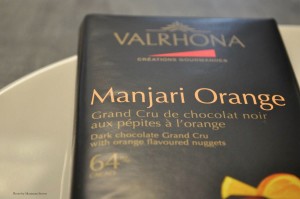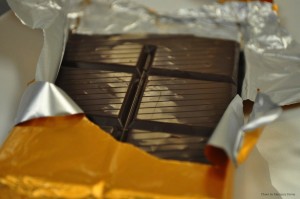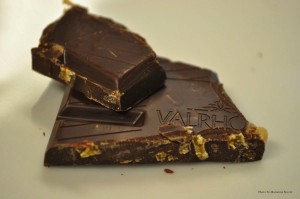The day after we visited the family farm and the coop, we got a special tour of one of the biggest cocoa plantations in Madagascar, the Somia plantation. Somia is run by Bertile’s Akkeson’s family (Bertile is the man we had lunch with on the beach on at Nosy Be) and supplies beans to some of the best chocolate companies in the world. Somia is managed by a French agronomist named Ivan, who greeted us at the gates to show us around.
The first place we stopped at was the nursery. There were 24,000 baby cacao trees getting ready to be planted. Most of them were criollo/trinitario types because they produce better tasting beans. Ivan explained that Somia was a mixed plantation with criollo, trinitario and forestero trees. It is this particular mix that creates the distinctive flavour of Madagascar beans.
Next Ivan drove us to the plantation where we could take a closer look at the trees. On the way there, he pointed out patches of empty spaces near banana trees where the new trees would be planted. Banana trees are one of the shade trees planted near cacao trees to protect them from direct sunlight.
The plantation looked healthy and beautiful. There were lots of ripe pods hanging from the trunk. Ivan cut one open and showed us how both criollo and forestero beans could exist in one pod. He also explained that the beans exhibit a range of flavours, with some trinitario tasting like forestero and some more like criollo. I was learning more about cocoa agronomy in this one hour talking to Ivan than I had after years of doing my own research. Ivan was obviously passionate about his work and he had years of expertise to draw from. He told us that he started working with cacao on the island of Sao Tome, Africa. The very same place where Claudio Corallo produces his great chocolate!
Ivan explained that one of the reasons that this plantation was so healthy was because there were good density between the trees. Good density creates good circulation which decreases the need for maintenance. All that’s left to do in these ideal conditions is to trim the trees of “suckers”. Suckers are small branches that take energy from the main branch of the tree, resulting in a smaller yield. A good tree will produce 80-90 pods per year.
We asked Ivan if there were any predators or diseases that were a threat to trees. Ivan said that the biggest threat was probably thieves coming into the plantation at night! He said that the conditions in Madagascar are perfect for growing cacao and that the trees are not affected by witch’s broom or some of the other diseases that can kill off trees. As a result, the plantation is 100% organic.
Our trip to Madagascar coincided with peak harvesting season, which is from September to October (there’s a smaller one from March to May), so we were able to see the fermentation and drying of the beans in full swing. Ivan brought us back to the farm where the beans are fermented and dried. The first thing that hit me was the smell of fermenting beans, sharp and vinegary, interspersed with the warm smell of drying cacao. I felt both repulsed and attracted to those smells and it was exciting to see the process in action. There were many people working on the farm. Somiya employs up to 750 people during peak harvest season!
Ivan is very strict about the duration and method in which the beans are fermented and dried. During the harvest, the workers take special care to separate the pods from trees that are pure criollo from the rest. Fermentation happens over the period of 6 days (5 days for the batches with only criollo beans). All the beans are then dried for 7 days. He explained that the drying should start slowly at the beginning and then speed up over time because the husk needs to be wet and porous to all allow the unwanted acids to escape. If drying is too fast, the acids can stay trapped under the husk and the beans will taste like vinegar! The ideal moisture level of the beans when they are finished drying is 7.5 %.
After our tour, Ivan invited us into his house for a drink and a chat. He brought out some chocolate for us to try using the beans from the plantation. The chocolate had that distinctive acidity and tanginess that I love. My favourite chocolate concoction, however, was the chocolate rum that Ivan brought out just before we left. His friend had made it using the Somia beans. It was sweet and chocolatey and was a perfect way to end our plantation visit.
We have one last posting from Madagascar coming up from our visit to Antananarivo. Stay tuned!









